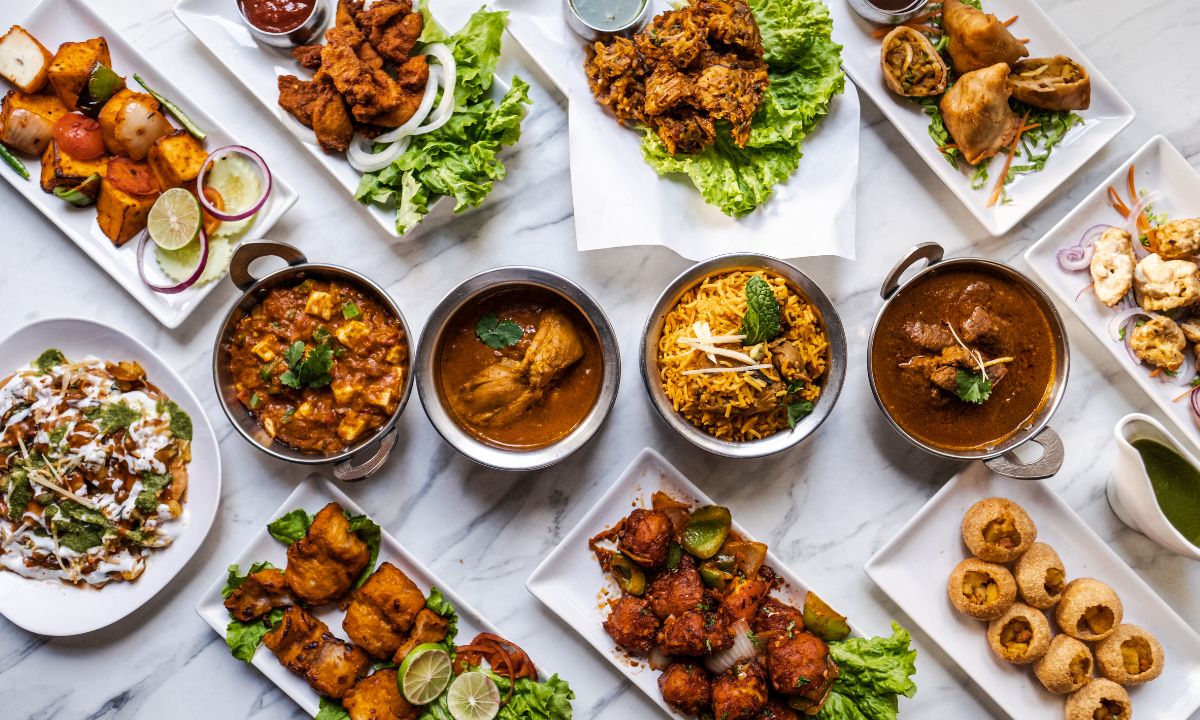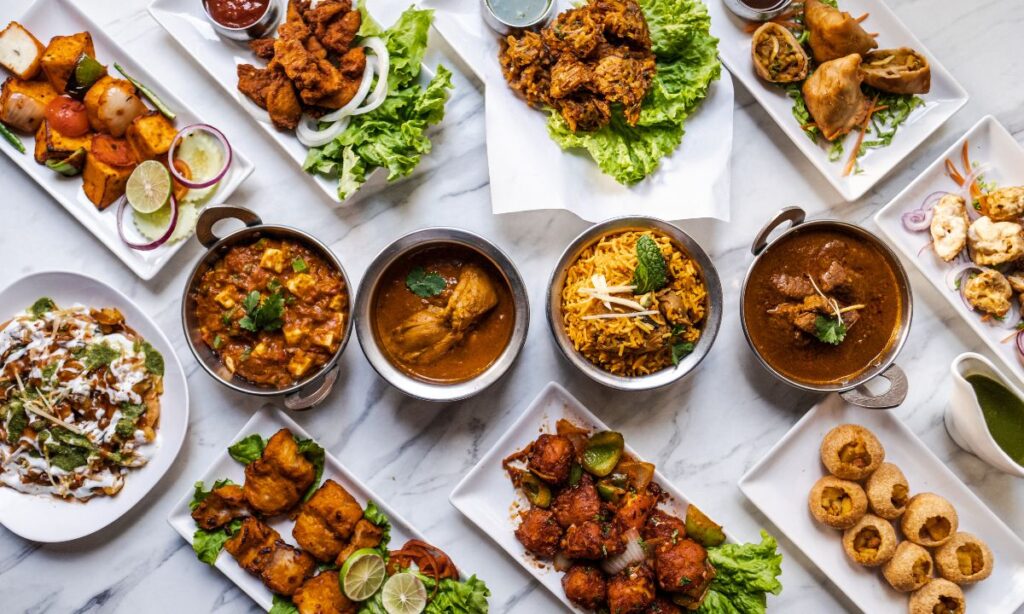
Indian cuisine is known for its rich and diverse flavors, encompassing a wide range of dishes that cater to various tastes and preferences. Whether you are a fan of spicy curries, aromatic biryanis, or delectable sweets, Indian food offers something for everyone.
How Long Does Indian Food Last in the Fridge? (Revealed)
As a result, one of the most common questions we receive is, “How long does Indian food last in the fridge?” In this comprehensive guide, we will explore the shelf life of different Indian dishes, the best practices for storing them, and how to avoid food waste.
Understanding Indian Cuisine
Before delving into the specifics of how long Indian food lasts in the fridge, it is essential to understand the components and characteristics of Indian cuisine. The use of spices and herbs in Indian cuisine is renowned not only for enhancing its taste but also for contributing to its preservation.
Key ingredients in Indian cooking include rice, lentils, vegetables, meats, and an array of spices like cumin, coriander, turmeric, and chili.
Common Indian Dishes and Their Shelf Life
Now, let’s take a closer look at some popular Indian dishes and how long they typically last when stored in the refrigerator:
- Curries
Curries, whether vegetarian or non-vegetarian, often contain a mix of vegetables, meats, and spices. It is possible to store curries in the refrigerator for 3-4 days when they are properly packaged in an airtight container. For longer storage, consider freezing.
- Biryani
Biryani is a flavorful rice dish made with aromatic spices and often includes meat or vegetables. If refrigerated promptly and stored in an airtight container, biryani can remain good for 3 to 4 days.
- Dal (Lentil Curry)
Dal, a staple in Indian cuisine, is made from lentils and various spices. When refrigerated, dal can last for up to 5 days. Be sure to cover it with a lid to prevent moisture loss.
- Roti and Naan
Indian bread like roti and naan can be refrigerated for 2 to 3 days. To maintain their softness, store them in an airtight bag or container.
- Sweets and Desserts
Indian sweets like gulab jamun, jalebi, and barfi should be consumed within a week when stored in the refrigerator. To ensure that they remain fresh, place them in an airtight container.
- Chutneys and Pickles
Chutneys and pickles have a longer shelf life due to their acidic nature. They can last for several months to a year in the fridge when kept in a sealed jar.

Factors Affecting Food Shelf Life
Several factors can influence how long Indian food remains safe and tasty in the fridge:
- Ingredients: The freshness and quality of ingredients play a crucial role in determining shelf life. Using fresh vegetables, meats, and dairy products can extend the life of your Indian dishes.
- Preparation: How the dish is prepared and cooked can affect its shelf life. For example, foods that are cooked thoroughly and sealed properly tend to last longer.
- Spices and Seasonings: The use of spices and seasonings can both enhance and prolong the shelf life of Indian food. Many Indian spices have natural preservative properties.
- Storage: The importance of proper storage cannot be overstated. To ensure that the quality of food is not compromised by moisture or odor, food should be kept in airtight containers.
Tips for Properly Storing Indian Food
To ensure that your Indian dishes stay safe to eat and maintain their flavors, follow these tips for proper storage:
- Use Airtight Containers: Airtight containers are your best friends when it comes to storing Indian food. They help prevent moisture, odors, and contaminants from affecting your dishes.
- Label and Date: Label your containers with the name of the dish and the date it was prepared. This makes it easy to identify and use older items first.
- Cool Food Before Refrigeration: Allow hot Indian dishes to cool down to room temperature before placing them in the fridge. Putting hot food directly into the refrigerator can raise its temperature and compromise the safety of other items.
- Divide into Smaller Portions: If you have cooked a large batch of Indian food, divide it into smaller portions before refrigerating. Smaller portions cool down faster and evenly, reducing the risk of bacterial growth.
- Keep the Fridge Clean: Regularly clean your refrigerator to prevent the buildup of mold and bacteria. This will help maintain the freshness of your Indian dishes.
- Reheat Properly: To ensure that any bacteria that may have developed during storage is killed, ensure that your Indian food is reheated to a safe internal temperature (165°F or 74°C).
How to Freeze Indian Food?
If you are looking to extend the shelf life of your Indian dishes beyond a few days, freezing is a great option. Here’s how to freeze Indian food effectively:
- Cool the Dish: Allow the dish to cool down completely before freezing. Hot food can raise the freezer’s temperature and affect the quality of other items.
- Use Freezer-Safe Containers: Invest in freezer-safe containers or resealable freezer bags. Remove as much air as possible to prevent freezer burn.
- Label and Date: Clearly label the containers with the name of the dish and the date it was frozen. This makes it easier to keep track of your frozen Indian food.
- Portion Control: Freeze individual portions of Indian dishes to make thawing and reheating more convenient. It also reduces the need to thaw and reheat the entire batch.
- Proper Thawing: When you are ready to enjoy your frozen Indian food, thaw it in the refrigerator overnight. This gradual thawing method helps retain the dish’s texture and flavor.
Signs of Spoilage
While proper storage can extend the shelf life of Indian food, it’s essential to recognize signs of spoilage to avoid consuming unsafe dishes. Some common indicators include:
- Foul Odor: If the food emits an unpleasant or sour odor, it’s likely spoiled and should be discarded.
- Mold Growth: Any visible mold on the food is a clear sign of spoilage. Discard the affected portion and check the rest for safety.
- Off Taste or Texture: If the food tastes or feels unusual, such as overly sour, slimy, or gritty, it is best to err on the side of caution and not consume it.
- Bacterial Growth: Be wary of any signs of bacterial growth, like bubbling, fizzing, or an unnatural fizz when you open the container.
Conclusion
Indian food is beloved for its vibrant flavors, and with proper storage, you can enjoy these dishes for extended periods. Whether it is a spicy curry, aromatic biryani, or sweet dessert, understanding the shelf life and following best storage practices is essential to prevent food waste and ensure your meals remain safe and delicious.
By paying attention to ingredient quality, preparation methods, and proper storage techniques, you can savor the richness of Indian cuisine in your fridge and freezer.
